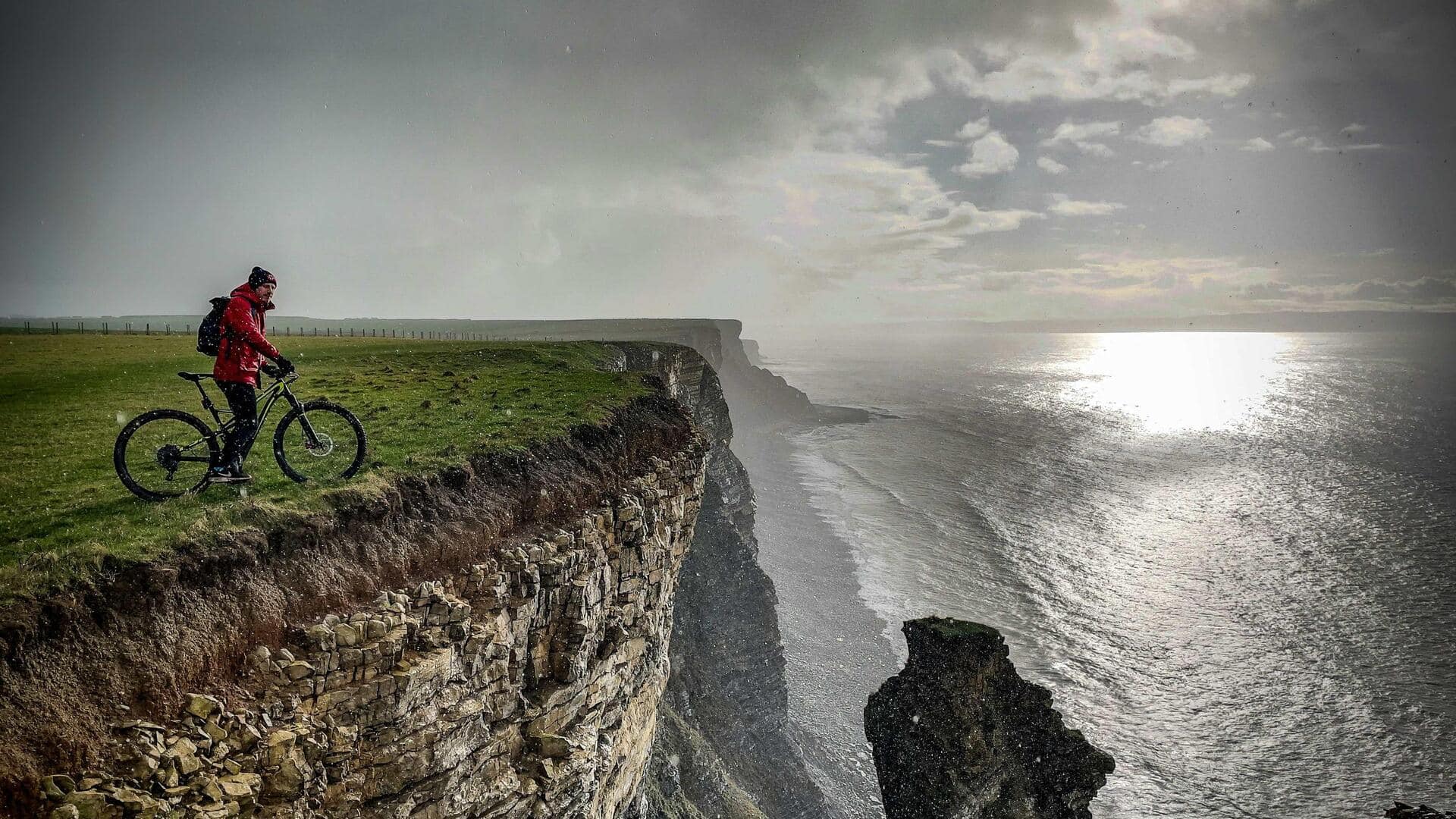
Cycling along remote coastal ridges: A guide
What's the story
Cycling remote coastal ridges brings you closer to untouched nature. These landscapes provide a serene escape from the hustle of city life, bringing to fore the coast's beauty. It's not just a physically demanding journey, but an appreciation of diverse ecosystems and views, many of which can hardly be accessed by other means. Here's what you need to know if you're interested.
Route selection
Choosing the right route
Selecting an appropriate route is key to a successful cycling adventure along coastal ridges. Consider distance, elevation changes, terrain type, etc., when planning your journey. Some routes may offer gentle slopes and paved paths, while others may present challenging climbs and rugged trails. Researching maps and local guides can help identify the routes that match your skill level and preferences.
Gear essentials
Essential gear for coastal cycling
Equipping yourself with the right gear will ensure that you stay safe and comfortable throughout your ride. Obviously, a sturdy bicycle capable of off-road conditions is a must-have, but don't forget a helmet for protection either. A repair kit will be invaluable if you face mechanical issues on a remote trail. Also, pack plenty of water, snacks, sunscreen, and weather-appropriate clothing to stay prepared.
Weather awareness
Understanding weather patterns
Weather is a major factor when it comes to cycling along coastal ridges. Always check the forecast before heading out, you wouldn't want to get caught in an unexpected storm, or extreme temperatures. Since coastal areas are close to large water bodies, the weather can change rapidly. Knowing when it's going to change can help plan your rest stops, or when to find shelter.
Wildlife consideration
Respecting local wildlife
Cyclists should also be mindful of local wildlife living along coastal areas. Many animals make these places their home, so keeping a respectful distance is important to avoid disturbing their natural behavior. Observing wildlife from a distance not only keeps them safe but also enhances your experience as you get to see them in their natural habitat without interference.
Safety tips
Staying safe on remote trails
Safety is of utmost importance when cycling on remote coastal ridges where help isn't easily accessible. Always inform a trusted person of your planned route and return time. Carry a communication device, emergency supplies, and a first aid kit. To ensure visibility, wear bright and reflective clothing, especially during low light conditions like dusk, dawn, or nighttime hours.